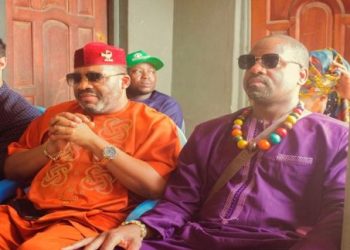Tanzania has made history with the unveiling of its first set of domestically built aircraft, marking a significant milestone in the expansion of Africa’s aviation industry.
Being the first Eastern African country to assemble its aircraft from inception to completion, showcases Tanzania’s dedication to embracing modern innovations and creating cutting-edge technology.
Three aircraft were assembled and they all sit pretty at the Morogoro Regional Airport plant, located in the Morogoro region approximately 190km West of Dar-es-Salaam.
The facility responsible for the assembly was created in 2021 by the Czech company Airplane Africa Limited (AAL), which has produced Skyleader 600 aircraft with a passenger capacity of two to four.
The first assembled aircraft was displayed in 2023 by the facility and in 2024, it has successfully assembled an additional two.
These newly assembled aircraft boast a capacity of two to four passengers each, signifying a remarkable advancement for Tanzania’s aviation sector.
Addressing the press about the new technological advancement and plans, Mussa Mbura, Director General of the Tanzania Airport Authority (TAA) said,
“The investment by AAL not only generates revenue opportunities for the government but also fosters job creation for Tanzanian citizens. Additional aircraft assembly is imminent, as evidenced by one such aircraft previously showcased at the Sabasaba industrial exhibition.”
The Skyleader 600’s (new aircraft name) unveiling was held at the Diamond Jubilee Hall of the Tanzania International Manufacturers Expo 2023 (TIMEXPO), which was hosted in the country’s capital, Dar es Salaam. The first aircraft was meant to carry two passengers, including the pilot and it was certified ready for business travel.
The low-wing aircraft is designed for recreational flying, pilot training, and special operations.
David Grolig, the Director of AAL, highlighted the strategic choice of establishing an ultralight aircraft manufacturing facility in Tanzania, citing the nation’s conducive investment environment and the local community’s enthusiasm for adopting cutting-edge technologies as primary motivators behind this decision.
Speaking about the features of the aircraft, Mbura stated,
“This facility is the sole AAL branch in Africa, with their global network also encompassing branches in the Czech Republic, Germany, China, and Russia.”
What Does This Innovation Mean To Tanzania And The Rest Of Africa?
As Tanzania emerges as a pioneer in aerospace innovation in Eastern Africa, it paves the way for other African countries to emulate its success and tap into its inherent potential for technological progress.
The creation of the aircraft heralds a bright horizon for East Africa’s aviation sector, highlighting the region’s ability to compete internationally in the sphere of technological advancement. This achievement not only showcases Tanzania’s prowess but also fosters a spirit of collaboration and growth across the East African region.
Tanzania is not stopping anytime soon. This year, the company in charge of the assembling plans to launch the Skyleader 500, an economical aircraft suited for agricultural purposes and other activities in rural areas.
Grolig emphasized the affordability and low operational costs of these ultralight aircraft, making them comparable to owning a car. He also stated that AAL intends to market these aircraft domestically as well as in other African countries.
This is a call for innovation and technological advancement by other African countries as Tanzania has proven that nothing can hold them back from being a leader in the aviation industry.
Tanzania’s commitment to boosting local production offers valuable insights for other African nations striving to become global equals. By prioritizing homegrown industries, Tanzania is not only strengthening its economy but also laying the groundwork for a more self-sufficient and competitive continent.
Other African countries should follow Tanzania’s lead in prioritizing local production. This approach isn’t just about strengthening individual economies; it’s about transforming Africa into a global equalizer.










